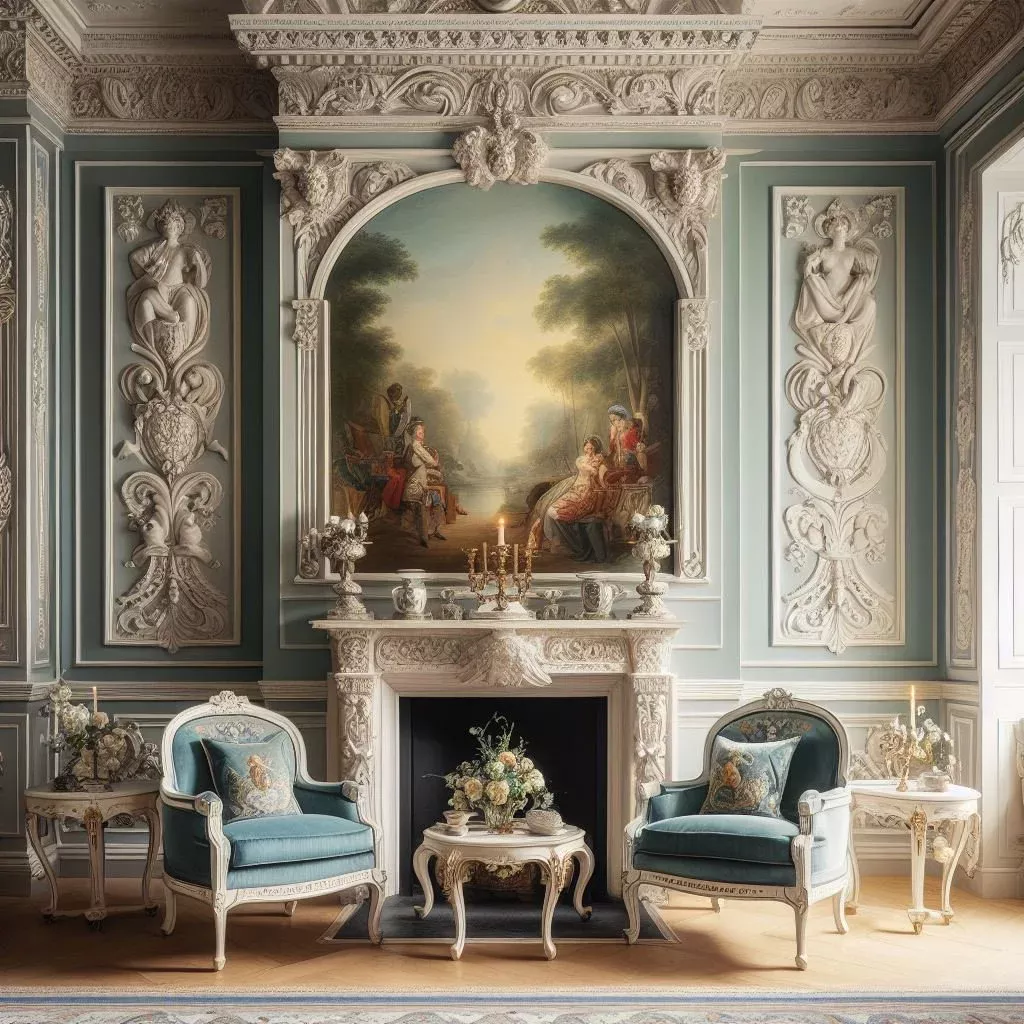The Georgian era, spanning the reigns of the four King Georges from the early 18th to the early 19th century, gifted us an architectural and interior style defined by an enduring sense of order and timeless elegance. Far from being a dusty relic of the past, the core principles of Georgian design—its classical lines and unwavering focus on symmetry—remain profoundly relevant, influencing contemporary interiors across the globe.
But why, after centuries, does Georgian chic continue to captivate designers and homeowners alike? The answer lies in the style’s devotion to classical harmony.
The Pillars of Enduring Elegance: Symmetry and Proportion
At the heart of the Georgian aesthetic is a strict adherence to symmetry and proportion, principles directly inspired by the architecture of ancient Greece and Rome. This focus on mathematical balance creates an inherent sense of calm and visual rightness that transcends fleeting trends.
- Symmetry: Georgian design demands balanced spaces. Furniture is often arranged in mirror-image pairings around a central focal point, such as a grand fireplace or a window. This orderly layout provides a sense of formality and composure to a room.
- Proportion: The Georgian architect paid meticulous attention to how all elements—from the height of the ceiling to the size of the windows and doors—related to one another. Features like high ceilings, tall sash windows, and perfectly spaced cornices were governed by precise rules, ensuring that every room felt harmoniously scaled.
This foundational order is precisely why Georgian-inspired spaces feel so comfortable and grounded, regardless of the decor placed within them.

Architectural Details: The Foundation of Classic Style
The classic lines of Georgian style are reinforced through its signature architectural features. These details are the backbone of the “chic” and are still essential when restoring or referencing the style today.
- Ornate Plasterwork: Crown moldings, cornices, and ceiling roses add a layer of refinement, tracing the clean lines where the wall meets the ceiling. In traditional designs, these details can be intricately adorned, while modern interpretations might favour simpler, bolder profiles.
- The Fireplace as Focal Point: The fireplace is the undisputed anchor of a Georgian room. Typically crafted from white wood or marble, its symmetrical design draws the eye and immediately establishes the room’s central axis and overall sense of balance.
- Wainscoting and Paneling: Traditional wainscoting (wood paneling on the lower half of a wall) adds depth and texture while underscoring the room’s linear structure. When painted in a light or neutral colour, it highlights the clean, vertical, and horizontal lines that define the era.
Furniture and Fabric: Simple Forms, Luxurious Textures
While the architectural backdrop is formal, Georgian furniture focuses on clean, straight lines with soft, fluid curves. This furniture acts as a perfect counterpoint to the room’s formal geometry.
- Materials: Dark woods like mahogany, walnut, and cherry were popular choices, often featuring elegant details like curved legs or simple carvings.
- Upholstery: Luxury is introduced through texture. Rich fabrics such as silk, damask, and velvet were traditionally used for upholstery, adding a sumptuous tactile quality to the ordered space.
- Colour Palette: Historically, Georgian interiors favoured muted, classical colours—think pale blue, sage green, dusty rose, and warm neutrals. This subdued palette keeps the focus on the architectural form, though modern interpretations may introduce bolder accents like navy or rich emerald.
The Modern Take on Georgian Chic
The enduring appeal of Georgian design is its adaptability. Modern designers frequently blend its core elements with contemporary touches, proving that classic lines truly matter.
To achieve “Modern Georgian Chic,” you should:
- Embrace Contrast: Pair a classic element, like intricate crown molding or a period fireplace, with a very modern piece of art or a minimalist light fixture. This tension between old and new feels layered and sophisticated.
- Maximize Light: Georgian homes were designed to maximize natural light with large sash windows. Enhance this by keeping windows minimally dressed or using light, elegant drapery. Mirrors are crucial for reflecting light and emphasizing the room’s symmetry.
- Keep it Uncluttered: The Georgian aesthetic champions elegance and refinement over clutter. Maintain clear surfaces and a symmetrical furniture arrangement to keep the space feeling open, sophisticated, and true to the style’s ordered roots.
By championing the principles of symmetry, proportion, and clean architectural lines, Georgian design offers a blueprint for creating interiors that are not just beautiful, but are fundamentally, mathematically, and eternally right. It is a style that guarantees your home will possess a classic, enduring chic that will never go out of fashion.



